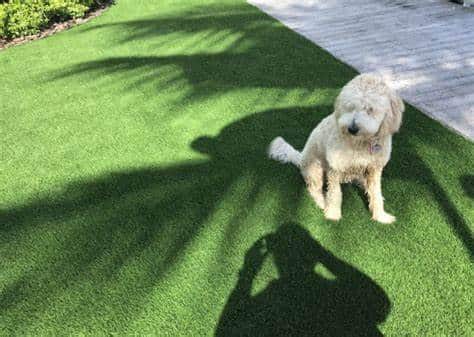Why It Is Not Recommended To Install Artificial Grass Over Natural Grass In San Diego?

- Artificial grass is often marketed as an eco-friendly solution due to its water-saving properties. However, the production and disposal of synthetic turf come with their own set of environmental challenges. Artificial grass is typically made from non-biodegradable materials such as plastic polymers, which contribute to pollution and landfill waste. Moreover, the manufacturing process of synthetic turf involves the use of chemicals and energy-intensive procedures, further exacerbating its environmental footprint. In contrast, natural grass helps to improve air quality, regulate temperature, and support biodiversity, making it a more sustainable choice in the long run.
- Artificial grass can pose health risks, especially when installed improperly or in hot climates. The synthetic materials used in artificial turf can absorb and retain heat, leading to elevated surface temperatures that may cause discomfort or even burns to people and pets. Additionally, artificial grass is susceptible to bacterial growth, particularly if not adequately cleaned and maintained. This can pose health hazards, especially for individuals with allergies or respiratory issues. In contrast, natural grass provides a natural and safe outdoor environment, promoting physical activity and overall well-being.
- While artificial grass may initially appear lush and vibrant, its synthetic nature often results in a less natural and visually appealing landscape compared to natural grass. Artificial turf lacks the variability and texture of real grass, giving it a uniform and artificial appearance that can detract from the overall aesthetics of outdoor spaces. Furthermore, artificial grass may fade or become discolored over time, especially in areas exposed to sunlight or heavy foot traffic. In contrast, natural grass offers a dynamic and ever-changing landscape, with seasonal variations and natural beauty that cannot be replicated by synthetic alternatives.
- Contrary to popular belief, artificial grass is not entirely maintenance-free. While it may require less ongoing care than natural grass, it still needs regular cleaning and occasional grooming to maintain its appearance and functionality. Debris such as leaves, dirt, and pet waste can accumulate on the surface of artificial turf, requiring periodic sweeping or rinsing to prevent odor and degradation. Additionally, artificial grass may need to be brushed or fluffed to prevent matting and ensure proper drainage. In contrast, natural grass may require more frequent mowing, watering, and fertilizing, but these tasks contribute to its vitality and resilience in the long term.
- Although artificial grass may seem like a cost-effective solution in the short term, it often entails significant upfront expenses for installation and ongoing maintenance. The initial cost of synthetic turf, including materials and labor, can be substantial, especially for larger or more complex landscaping projects. Additionally, artificial grass may need to be replaced every 10-15 years, further adding to the long-term costs. In contrast, while natural grass may require periodic investments in lawn care equipment and supplies, its lower upfront costs and minimal ongoing maintenance can make it a more economical choice over time.
FAQs
Is Artificial Grass Pet-Friendly?
While artificial grass is marketed as pet-friendly, it can pose health risks due to bacterial growth and elevated surface temperatures. Regular cleaning and maintenance are essential to ensure a safe outdoor environment for pets.
Can Artificial Grass Be Recycled?
While some manufacturers offer recycling programs for synthetic turf, the majority of artificial grass ends up in landfills at the end of its lifespan. The non-biodegradable nature of artificial turf poses challenges for sustainable disposal and recycling.
Does Artificial Grass Require Watering?
While artificial grass does not require watering like natural grass, it may need occasional rinsing to remove debris and maintain its appearance. However, excessive water usage during cleaning can contribute to environmental concerns and water wastage.
Conclusion
In conclusion, while artificial grass offers some benefits in terms of water conservation and ease of maintenance, it also comes with several drawbacks that should be carefully considered. From its environmental impact and health concerns to aesthetic appeal, maintenance requirements, and cost considerations, there are compelling reasons why installing artificial grass over natural grass may not be the best option for homeowners and landscapers alike. For more information, contact Artificial Grass San Diego at (619) 784-8855.

